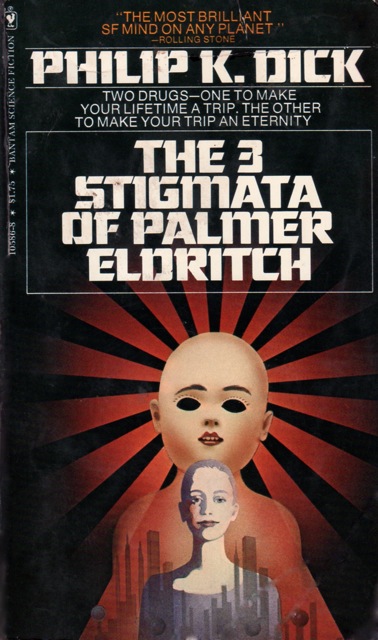SEMIOPUNK (28)
By:
December 1, 2024
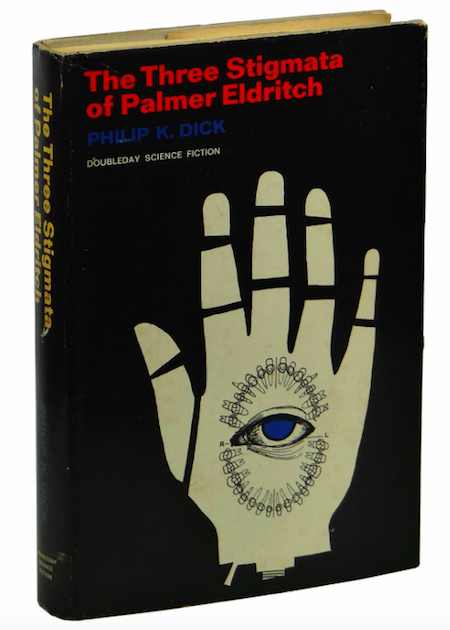
An irregular, ongoing series of posts dedicated to surfacing examples (and predecessors) of the sf subgenre that HILOBROW was the first to name “semiopunk.”
BABEL (2022) | BABEL-17 (1966) | CAMP CONCENTRATION (1968) | A CANTICLE FOR LEIBOWITZ (1959) | CAT’S CRADLE (1963) | COSMONAUT KEEP (2000) | THE DIFFERENT GIRL (2013) | DOOM PATROL (1987–91) | THE EINSTEIN INTERSECTION (1967) | EMBASSYTOWN (2011) | ENGINE SUMMER (1979) | EXPLOITS AND OPINIONS OF DR. FAUSTROLL, PATAPHYSICIAN (1911) | FEERSUM ENDJINN (1994) | FLATLAND (1884) | FRIDAY (1982) | LE GARAGE HERMÉTIQUE (1976–79) | THE GLASS BEAD GAME (1943) | GLASSHOUSE (2006) | GRAVITY’S RAINBOW (1973) | THE HAMPDENSHIRE WONDER (1911) | LORD OF LIGHT (1967) | THE MAN WITH SIX SENSES (1927) | THE MOUNTAIN IN THE SEA (2022) | NINEFOX GAMBIT (2016) | ODD JOHN (1935) | PATTERN RECOGNITION (2003) | THE PLAYER OF GAMES (1988) | RIDDLEY WALKER (1980) | RODERICK (1980–83) | SNOW CRASH (1992) | THE SOFT MACHINE (1961) | SOLARIS (1961) | THE SPACE MERCHANTS (1953) | THE THREE STIGMATA OF PALMER ELDRITCH (1964) | TIME OUT OF JOINT (1959) | UBIK (1969) | VALIS (1981) | A VOYAGE TO ARCTURUS (1920) | VURT (1993) | WHITE NOISE (1985).
THE THREE STIGMATA OF PALMER ELDRITCH
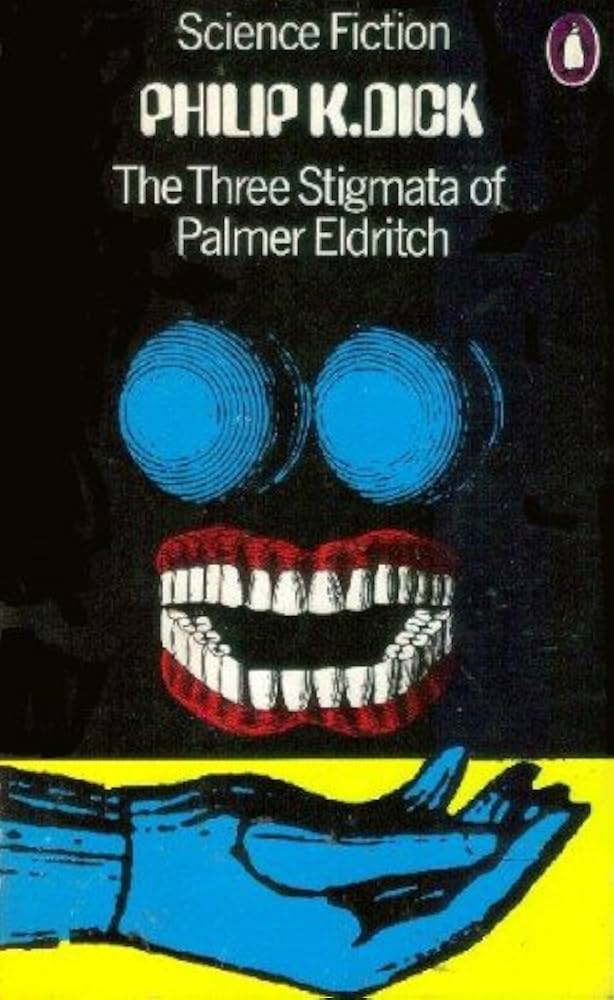
In Philip K. Dick’s 1964/1965 novel The Three Stigmata of Palmer Eldritch — note that 1964 is, according to HILOBROW’s periodization, the first year of the cultural era known as the Sixties — we find ourselves in the year 2016. The planet is badly overheated; a May afternoon in New York City is hot enough to cook a Thanksgiving turkey. (Dick’s prediction was off… but only by a few decades, perhaps.) In response, the United Nations — which has become a global governing body — is now conscripting settlers to colonize unpleasant nearby planets.
On Mars, the human settlers are so discomforted by their joyless daily lives that they’ve become addicted to Can-D, a drug that allows them to escape into a collective Barbie-and-Ken-esque (“Perky Pat”) hallucination, the contours of which are shaped by the figures and layouts they obsessively order from an Earth-based supplier. (See Dick’s 1963 short story “The Days of Perky Pat.”)
Mattel had introduced Barbie dolls and playsets five years earlier. But Dick isn’t satirizing “Barbie syndrome” — a term that has been used to depict the desire (most often associated with pre-teenage and adolescent girls, but in fact applicable to any age group or gender) to look and/or live a lifestyle like Barbie. He’s extrapolating from this in order to predict what today is the wildly popular “social simulation game” or “virtual dollhouse” phenomenon. One thinks, for example, of Second Life, Animal Crossing, or the Sims franchise. The need for VR goggles and haptics is obviated, in Dick’s story, by the Can-D.
The only downside of the Can-D experience, as far as the Martian colonists are concerned? It doesn’t last long enough. Which is why Leo Bulero, who runs the Perky Pat corporation — which, of course, also secretly manufactures and distributes Can-D — is worried when he learns about what his business rival Palmer Eldritch has been up to lately.
An entrepreneurial huckster, Eldritch left the solar system 10 years ago to explore the Prox System — in search, it seems, of a more powerful version of Can-D. Having successfully accomplished his mission — he’s using a mysterious lichen that will allow him to produce Chew-Z, a drug whose users can dispense altogether with dolls and layouts. Chew-Z, one hears, will transport you to your own universe, one which you can control and shape at will!
Let’s pause at this juncture to consider the appeal of this story for the commercial semiotician whose sales pitch includes an appeal more or less like this one: “Consumer research alone can’t tell you how your target audience makes sense of [your product/service category / a specific cultural territory]. That’s because consumers don’t know what they know! Semiotic analysis, by contrast, can surface and dimensionalize the network of assumptions hard-wired into consumers’ collective unconscious.” Which is true, by the way.
The conceit of Dick’s story is that it takes place partly in the real world, a place where Perky Pat layouts (and tablets of Can-D) are produced and purchased… and partly inside the consumers’ collective unconscious. Like a semiotician, Dick’s reader passes back and forth between these realms.
All of which is well and good… until it becomes entirely unclear whether there is any longer (or ever was) a “real world.”
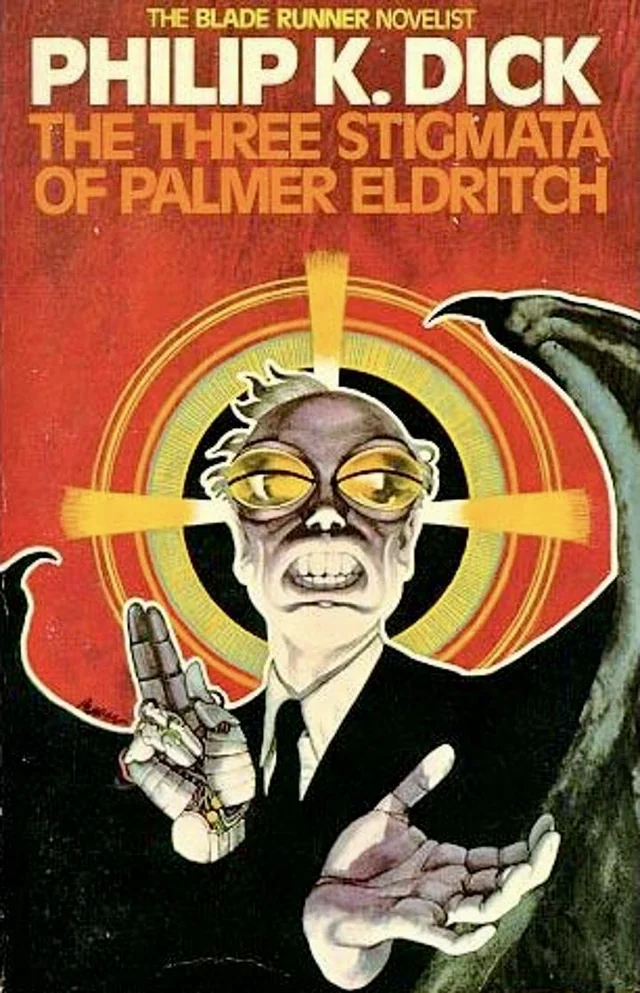
I won’t get into the complexities of the novel’s plot, but suffice it to say that Eldritch’s new drug is an insidious, alien phenomenon. It does transport you into an illusory world… but it’s a world controlled by Eldritch himself. He’s this universe’s god… or more accurately, its demiurge, since his creation is a flawed one and he lacks complete control.
Eldritch’s “three stigmata,” by the way, are the mechanical prostheses he’s been forced to acquire in his quest for power. He’s got a mechanical arm, artificial eyes, and steel teeth… and these iconic attributes manifest themselves to anyone foolish enough to get addicted to Chew-Z.
Our hero is not Leo Bulero — who finds himself plunged into powerfully realistic nested hallucinations controlled by his rival, as a result of which he ceases to believe in reality, and comes to understand that he himself and all other beings are NPCs in Eldritch’s private game. Instead, our hero is Bulero’s lowly employee Barney Mayerson, a precog fashion market analyst who foresees that he may be able to halt Eldritch’s scheme… but only if he sacrifices his own life. Which he’d rather not do.
Hold up — precog fashion market analyst? That’s right, Barney Mayerson is a commercial semiotician of sorts, a literary ancestor of William Gibson’s pattern-recognizing Cayce Pollard. His job is to use his extraordinary precognition ability to predict which Perky Pat accessories will become popular. Talk about bathos! (Perhaps my colleagues can relate?) Fleeing his redemptive destiny, Mayerson takes refuge among a group of Can-D addicts on Mars, leaving humanity susceptible to what Dick describes as “the evil, negative trinity of alienation, blurred reality and despair.”
PS: Does all this tripling — the three stigmata, the “negative trinity” — point us in the direction of the pioneering semiotician C.S. Peirce, for whom all things semiotic, including “triadic mediation” itself, comes in threes? Probably not… But I’d happily read a thesis on the topic.
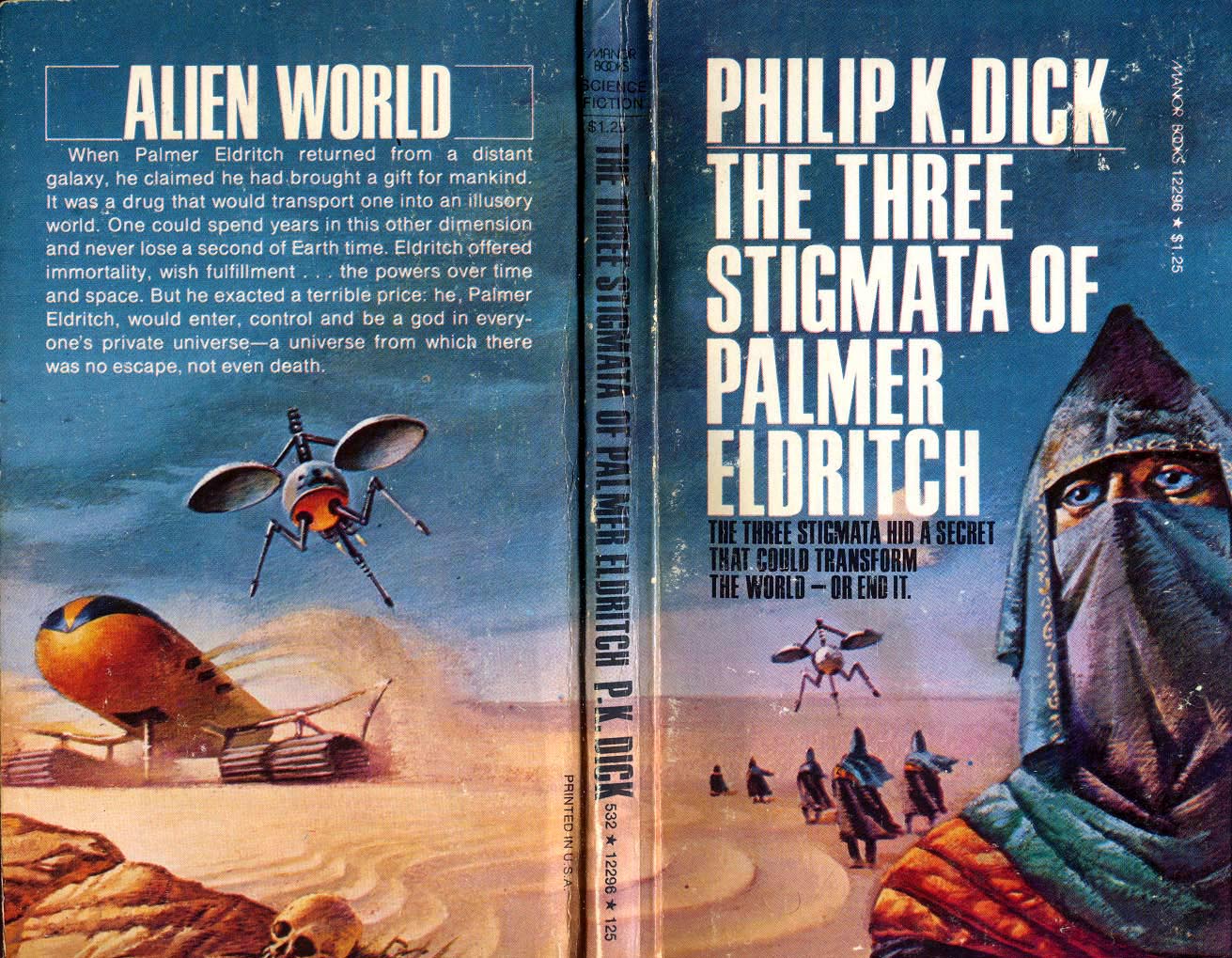
Let’s return to the Perky Pat experience. What’s so fascinating is that users of Can-D think of the drug as a religious experience, and argue whether the “translation”, which lasts only a short time, is an actual physical transportation to another world, or merely an illusion. And what’s so depressing is that — given the extraordinary opportunity for “translation” of this sort, what everyone wants to use it for is… living la vida Barbie. *Sigh.*
Let’s also return to the phenomenon of Palmer Eldritch, who apparently has ceased to be human, and has become instead a manifestation of a much greater and more inscrutable god-like figure. This god eventually seeks to switch places with Barney… it would prefer to live in a dreary (real) Martian colony than remain trapped inside a lonely (virtual) universe. Now there’s a religious parable well worth pondering.
JOSH GLENN’S *BEST ADVENTURES* LISTS: BEST 250 ADVENTURES OF THE 20TH CENTURY | 100 BEST OUGHTS ADVENTURES | 100 BEST RADIUM AGE (PROTO-)SCI-FI ADVENTURES | 100 BEST TEENS ADVENTURES | 100 BEST TWENTIES ADVENTURES | 100 BEST THIRTIES ADVENTURES | 75 BEST GOLDEN AGE SCI-FI ADVENTURES | 100 BEST FORTIES ADVENTURES | 100 BEST FIFTIES ADVENTURES | 100 BEST SIXTIES ADVENTURES | 75 BEST NEW WAVE SCI FI ADVENTURES | 100 BEST SEVENTIES ADVENTURES | 100 BEST EIGHTIES ADVENTURES | 75 BEST DIAMOND AGE SCI-FI ADVENTURES | 100 BEST NINETIES ADVENTURES | 75 BEST HADRON AGE SCI-FI ADVENTURES.

